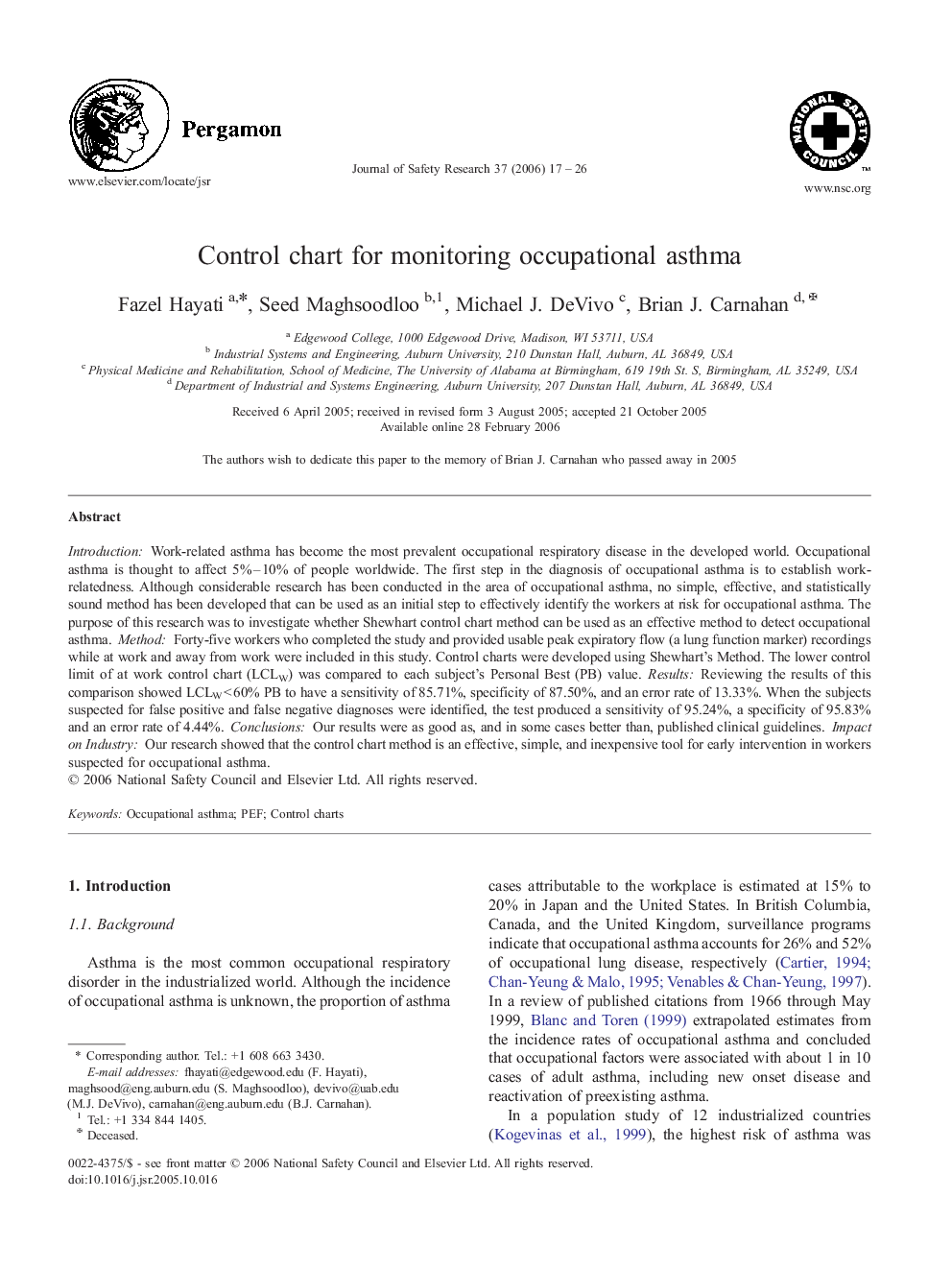| Article ID | Journal | Published Year | Pages | File Type |
|---|---|---|---|---|
| 587930 | Journal of Safety Research | 2006 | 10 Pages |
IntroductionWork-related asthma has become the most prevalent occupational respiratory disease in the developed world. Occupational asthma is thought to affect 5%–10% of people worldwide. The first step in the diagnosis of occupational asthma is to establish work-relatedness. Although considerable research has been conducted in the area of occupational asthma, no simple, effective, and statistically sound method has been developed that can be used as an initial step to effectively identify the workers at risk for occupational asthma. The purpose of this research was to investigate whether Shewhart control chart method can be used as an effective method to detect occupational asthma.MethodForty-five workers who completed the study and provided usable peak expiratory flow (a lung function marker) recordings while at work and away from work were included in this study. Control charts were developed using Shewhart's Method. The lower control limit of at work control chart (LCLW) was compared to each subject's Personal Best (PB) value.ResultsReviewing the results of this comparison showed LCLW < 60% PB to have a sensitivity of 85.71%, specificity of 87.50%, and an error rate of 13.33%. When the subjects suspected for false positive and false negative diagnoses were identified, the test produced a sensitivity of 95.24%, a specificity of 95.83% and an error rate of 4.44%.ConclusionsOur results were as good as, and in some cases better than, published clinical guidelines.Impact on IndustryOur research showed that the control chart method is an effective, simple, and inexpensive tool for early intervention in workers suspected for occupational asthma.
